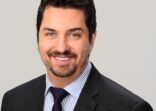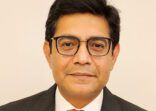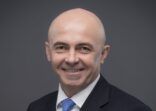Investing in Asian investment grade bonds is a “no brainer” right now as the asset class looks cheap compared with US investment grade debt, with other emerging market bonds and with history, Jean-Charles Sambor, head of emerging market fixed income at BNP Paribas Asset Management (BNP Paribas AM), told FSA in an interview.
With heightened geopolitical tensions and market uncertainty, the first half of 2022 has witnessed significant capital flows to money markets at the expense of both equities and fixed income.
There is now a growing chorus of investors who have concluded that the sell-off has been too aggressive and there are now attractive entry points in high yield. This view is buttressed by the fact that corporate balance sheets have strengthened significantly since the Covid-19 pandemic began as many investors took advantage of low interest rates and abundant liquidity to lock in cheap funding at extended maturities.
Meanwhile, investors argue that valuations in the Chinese property sector have now reached a point where they are once again attractive after a brutal sell-off that began during the second half of last year, while the Chinese government has proved increasingly supportive of the sector, for example by encouraging better quality names to acquire their distressed peers.
However, Sambor takes the view that Asian investment grade fixed income represents a much more attractive opportunity than high yield right now.
“We are positive about both (high yield and investment grade); for high yield, we see a huge opportunity but it’s very volatile,” said Sambor. “With IG [investment grade], it’s much more of a no brainer.”
“We have seen this movie many times. When you have stabilisation, money comes back first to IG and then to high yield.”
Sambor conceded that it would take some time for investors to re-engage with Asian investment grade fixed income after the difficulties of the past year. He also said that some investors were hoping to see more policy support from the Chinese government. However, he said the opportunities were too good to pass up.
“We think that spreads are very cheap compared to other regions, compared to history and compared to US investment grade. We are of the view that it is the right time to reallocate to fixed income on the hard currency side,” he said.
ESG in Asia
BNP Paribas AM has made a big push towards ESG and in July said that it aimed to have at least 90% of its open-ended funds meeting Article 8 or Article 9 Sustainable Finance Disclosure Regulation criteria by 2025.
According to a spokesperson, as of June, 86% of its European public open-ended funds were classified under SFDR articles 8 and 9 and the spokesperson said the firm would aim to keep increasing this number.
In Asia, BNP Paribas AM launched the BNP Paribas Sustainable Asian Cities Bond fund in May, a Luxembourg-domiciled sustainable thematic fixed income fund focused on urbanisation in Asia. BNP Paribas AM said that it was the first Asia focused fixed income strategy in the market to be classified under SFDR Article 9 definition as having sustainable investment as its objective.
The fund invests in a mixture of green, social, sustainability and sustainability-linked bonds as well as conventional bonds from issuers who derive at least 20% of their revenues from this theme.
Sambor said that BNP Paribas AM began working on the fund at the start of the pandemic when the firm realised that there would be a bifurcation between developed markets, which were witnessing deurbanisation as more white-collar workers began working from home, and emerging markets, particularly in Asia, where the trend towards urbanisation continued apace.
Sambor conceded that ESG as an asset class remained far less developed in Asia, where the ‘greenium’ that investors receive for holding sustainable-labelled bonds is far less than it is in more established markets, particularly in Europe.
“Asia is not as advanced as Europe but we are getting there very quickly,” he said. “We are also of the view that the future of the asset class is to be more focused and more focused on specific themes”

















